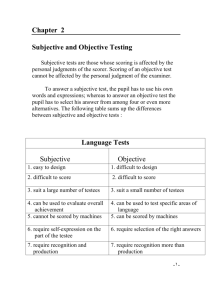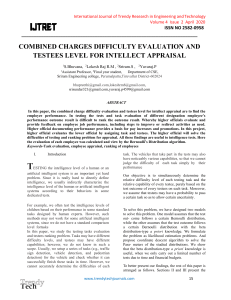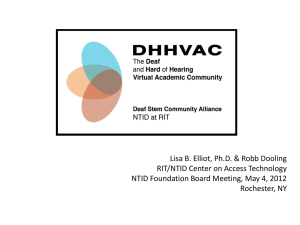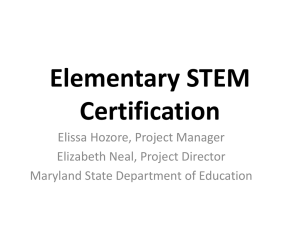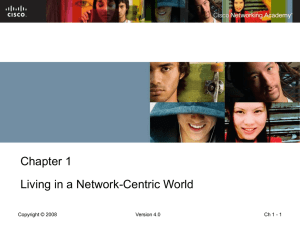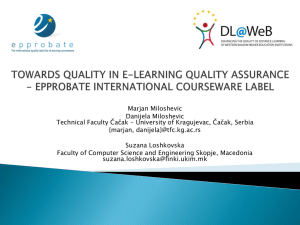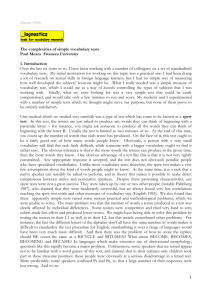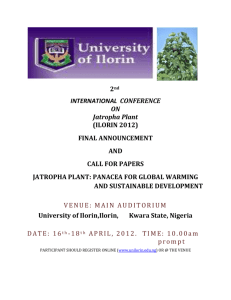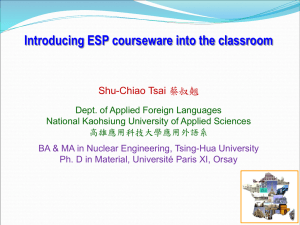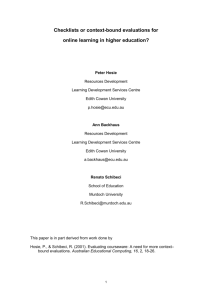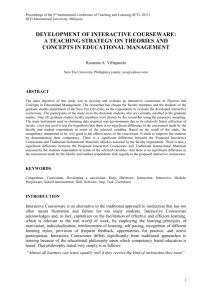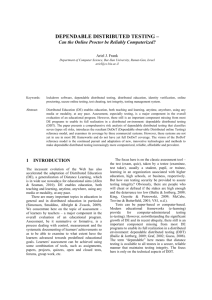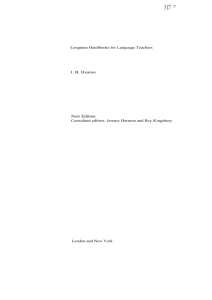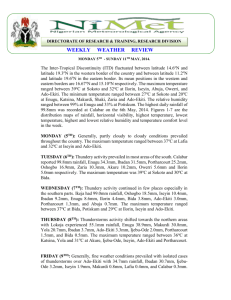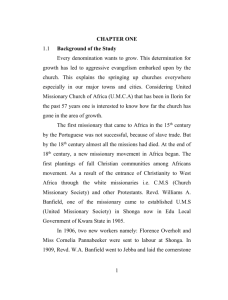Nature of Objective Test Items and Resources
advertisement
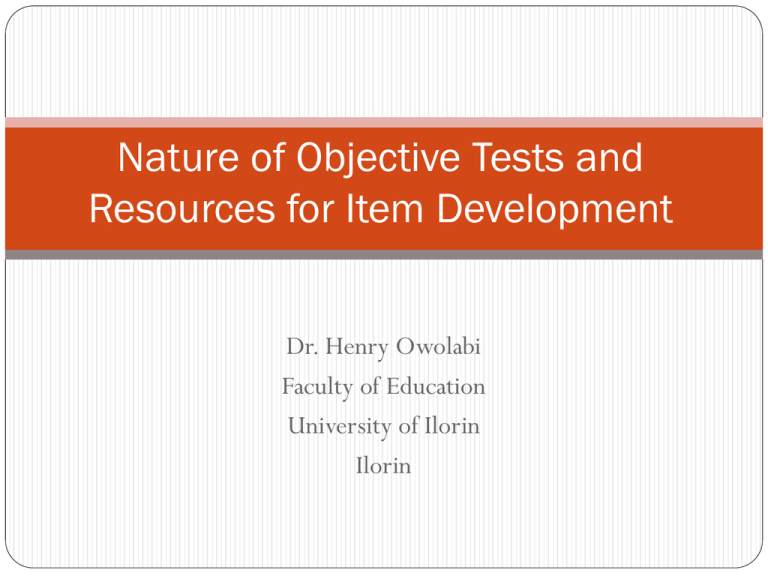
Nature of Objective Tests and Resources for Item Development Dr. Henry Owolabi Faculty of Education University of Ilorin Ilorin Nature of objective tests 1: Why we assess To determine level of success in achieving course objectives; To know how well the students are doing in the course; To find out teaching/learning problems Determine appropriate corrective/remediation procedures; Obtain data on students’ standing/class of degree; Have a basis for award of certificate; Have/keep records of learner progress; Gauge the integrity/quality of the system; Facilitate students’ transfer to other institutions; Generate data for research; and Take decisions on scholarship, grants and support. Nature of objective tests 2: What Lecturers assess Cognitive learning: Intellectual, mental and rational thought processes. Affective learning: emotional, attitudinal and other value laden actions. Psychomotor learning: manipulative skills including movement of the hands, feet, eyes and different parts of the body, handling of equipment /apparatus and manipulation of implements/gadgets. Testing Testing is a broad term that indicates exposing students to questions, quiz, puzzles, problems or situations that will make students to ‘bring out’ certain behaviours (knowledge, skills, competences) for observation. A test creates opportunity to confirm what transpire between teachers and learners. The examination system in the university depends heavily on testing. In this workshop, reference is made to achievement test which is the most applicable to the university examination system. Behaviours focused by Test Items: Thinking levels of revised Bloom’s Taxonomy Remember: Factual, Conceptual, Procedural, Metacognitive Knowledge Understand: Translation, Interpretation and Extrapolation Apply: using knowledge to solve practical problems and sometimes hypothetical examples may help Analyze: cause and effect relationships involving facts, laws or principles and providing acceptable explanations for these. Evaluate: make decisions and draw inferences and conclusions Create: bringing out a new idea, method, product in the form of writing, drawing and patterns Nature/Characteristics of objective test items There are usually two parts: stem and options They give room to both the tester and the testee to be free from influencing the test score: objective scoring. The coverage of syllabus or course content is comprehensive. There is a large number of items on the test. The type of response expected from the testees can be easily scored right or wrong. Problems involving reasoning and judgment are presented It could be used for checking memory of facts Check recognition but not recall Free from subjectivity. Structure of objective tests items 1: Types of objective tests True or False/ Yes or No Matching type Fill in the gaps/completion item type Multiple Choice Tests Interpretive Exercise Structure of objective test items 2: Stem Types Direct question Incomplete statement Description Narration or story information or data Picture or diagram Structure of objective test items 3: Stem requirement types The nature of the stem may require two forms of responses: Supply type response format requires that the testees either supply short answers or complete a sentence or statement Selection type provides the options from which testees pick the one they consider most appropriate. Structure of objective test items 4: Option types The options are also in two parts: Answer, and Decoys/distractors/distracters Structure of objective test item 5: Option types Options, responses or alternatives: There are two types of options: - Correct answer type are applicable to simple questions in the nature of what, who, where or when on facts laws and principles. - Best answer type is used for more complex questions which present options that are correct to various degrees and so there may not be an absolutely correct option. Questions here are of the why and how nature and only one of them is most appropriate. Developing/writing stems Gronlund (1981) suggested that item writers should watch out for the following: Unclear instructions Ambiguous statements Unnecessarily long sentences: wordiness Complex sentence Difficult vocabulary Poor illustrative material Biases: racial, ethnic or gender Writing of options There should be only one answer among the alternatives. Those who apply wrong reasoning in their interpretation of the stem must have answers suitable to their thinking. There is a minimum proportion of testees an option must attract to be seen as functioning. Number of options should not be increased at the detriment of functionality. Advantages of multiple-choice questions Comprehensive coverage of course content is made possible Different components of the subject matter and learning outcomes are also easily measured Through item analysis information on the capabilities (strengths and weaknesses) of the question can be provided It is easy to locate aspects of the subject matter posing problems to learners It is easy to score and no subjectivity is involved Disadvantages Much time is needed to write the items It lends itself to guessing It makes it easy to cheat Difficult to write higher order questions (i.e., procedural, metacognitive) Cannot test ability to organize and present knowledge Ensuring quality of tests: Agreement of lecture and test contents Following the course content as contained in the University Handbook current for the academic year in which it is used. The courseware, which is more detailed, must have been used for the delivery of the lectures and the relevant references. The test items used for students’ assessment should be derived from these sources. This is the content validation process for assessment of students. Resources required for ensuring quality Reference Texts – books, journal articles, instructional texts etc. main textbooks followed for entire course or for each topic in the course content Courseware – compliance with information made available to students in the Courseware Students’ Notes – taken during interactions with the Lecturer Assignments – given to students in the course of the semester and as a product of lectures Past Questions – items used in the academic sessions prior to the present Continuous Assessment – questions similar to those that had previously been attempted by the students Online Resources – these must have been used during lectures or assignments. The students must be aware that the Lecturer will make use of these resources Conclusion Thanks

